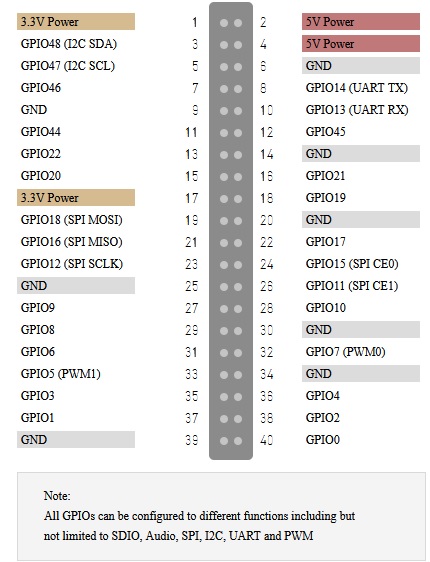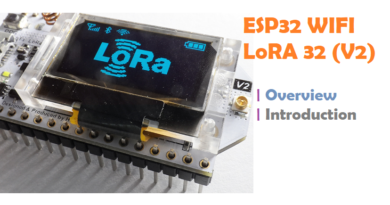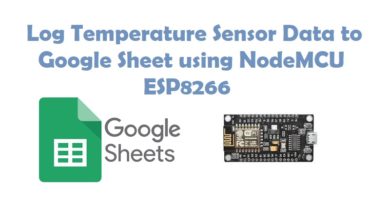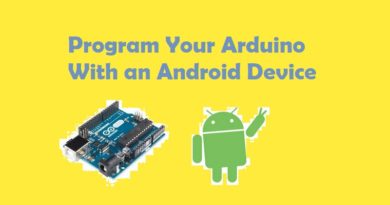BeagleV: An Affordable RISC-V Computer with Linux Support
BeagleBoard.org and Seeed Studio have announced a partnership with StarFive to launch the most affordable Linux-capable RISC-V single-board computer. There are many single-board computers about, but few are powerful and have RISC-V processors. BeagleV is the Example for that. It has SiFive U74 processor. The SiFive U74 has two cores clocked at 1.5 GHz and 2 MB of L2 cache, which compete with the performance that something like an ARM Cortex-A55 processor.
What’s RISC-V?
Most single-board computers on the market (with Linux support) are ARM-based. A few use x86-64 chips, and an even-fewer few MIPS. The BeagleV uses a RISC-V processor.
RISC-V (pronounced ‘risk-five’) is an open source instruction set architecture (ISA) free of patents and devoice of licensing fees. The source code for it is available under a BSD license, meaning anyone can create and tinker with the RISC-V designs to meet their needs.
First introduced in 2010, RISC-V is a relatively ‘new’ tech, and it’s not the most ‘powerful’. But its power efficiency and openness has led to it being used in embedded devices.
The BeagleV will be compatible with freeRTOS and Linux distributions like Debian and Fedora, according to the manufacturer. The board itself has been developed in partnership between BeagleBoard, StarFive Seeed Studio, as the BeagleV website outlines. The first BeagleV boards should begin shipping in March, although the manufacturer is currently only accepting applications to order a board.
The system is supplied with 8GB of LPDDR4 memory, as two four-gig modules, though a cheaper variant with 4GB is also planned. The board includes four USB 3.0 ports, a gigabit Ethernet port, 3.5mm audio jack, 2.4GHz 802.11b/g/n Wi-Fi, Bluetooth 4.2, and a 40-pin Raspberry Pi-style general-purpose input/output (GPIO) header.
Hardware Overview
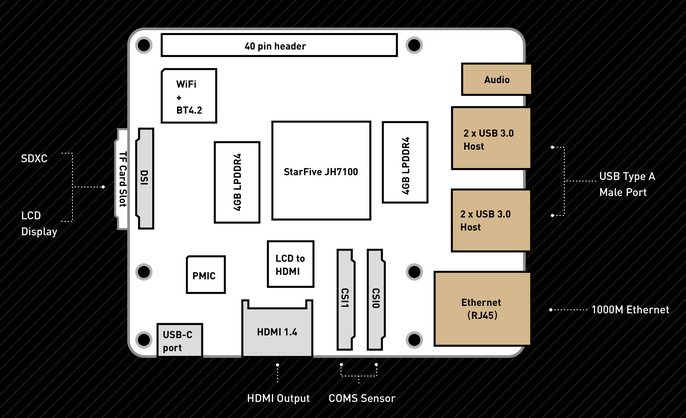
Specifications
- • SiFive U74 RISC-V Dual core with 2MB L2 cache @ 1.5GHz
- • Vision DSP Tensilica-VP6 for computing vision
- • NVDLA Engine (configuration 2048 MACs@800MHz )
- • Neural Network Engine (1024MACs@500MHz)
- • 8GB LPDDR4 (2 x 4GB LPDDR4 SDRAM)
Processing
- • Video Decoder/Encoder(H264/H265) up to 1 channel 4K@60FPS or 8 channel 1080p@30FPS
- • Dual channels of ISP, each channel support up to 4K@30FPS
- • 2 x MIPI-CSI, 1 x MIPI-DSI
- • 1 x HDMI support up to 1080P@30FPS
- • Support MIPI-CSI TX for video output after ISP and AI processing
- • JPEG Encoder/Decoder
- • 4 x USB 3.0 Ports
- • 1 x Gigabit Ethernet
- • 1 x 3.5mm Audio jack
- • Support TRNG and OTP
- • Support DMAC, QSPI and other peripheral
- • Dedicated Audio Processing DSP and sub-system
- • 40 Pin GPIO Header (28 x GPIO, I2C, I2S, SPI, UART)
- • MicroSD card slot for operating system and data storage
- • 1 x Wi-Fi 2.4GHz b/g/n and Bluetooth 4.2
- • Power with USB Type-C (5V@3A)
- • 1 x Reset button and 1 x Power Button
Pinout
